|
As a means to better manage students in PE, I have created 3 posters to be used as visuals in my classes. As we know, the management of students in PE is very different than the way in which teachers manage students in the classroom. A new strategy that I am putting into place within my PE classes is the use of behavior self-management visuals that can be used as a first means of intervention when dealing with questionable student behavior.
When a student or group of students are showing signs of getting off track, I simply go up to them and point to whichever poster is most fitting at that particular moment. In my opinion, simply telling them to reflect on the question which is located at the bottom of each poster is enough as a first means of behavior management intervention. No direct words or discussions are needed at this point and it allows the student a first chance to reflect on their behavior and make good choices. I must say that this strategy has worked well and I plan on continuing to use it as it's very non-threatening in nature and, in most cases, is enough to get students back on track. As you can see by the posters below, each one has a specific purpose. The first one reminds students that their behavior may be negatively affecting their own learning. The second one implies that their behavior may be affecting the learning taking place around them and the third one asks them to reflect on whether or not they understand the expectations of a task or activity. If they do not, they need to ask for help. If you would like to try this strategy out, please let me know and I would be more than happy to send you a copy of the 3 behavior self-check posters. If you do use them, let me know how they work out!
33 Comments
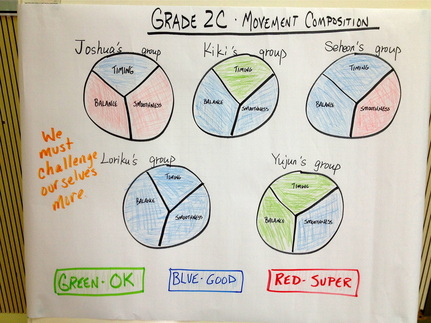 Whenever possible I try to involve students in the process of assessment design in PE as it offers them opportunities to not only take ownership over their own learning but to also look in-depth at a task and breakdown essential requirements related to success. What I mean by this is that they must ask themselves this critical question-- “What is needed in order to be successful in this activity?” Assessment is all about making judgements and teaching our students to identify important factors related to success immediately sets the stage for deeper level thinking to take place. During the course of this past week, my students in grades 2 to 4 have been working on creating simple routines in our movement composition unit. Using a number of You Tube videos on different types of movement composition, I have had the students pretend to be olympic judges and to think hard about what makes an excellent routine so amazing to watch. What key elements can we pick out from these routines that can be measured? I had each class watch several different types of movement composition such as rhythmic gymnastics, floor routines, cirque du soleil, hip hop etc. After watching these You Tube videos, the students had discussions with their peers about what they had seen and tried to identify factors related to success. We got together as a group and the students shared their ideas which were recorded on chart paper. Some of the criteria that they came up with were balance, body control, timing, smoothness and flow, strength, teamwork, challenging moves, and beauty. Each class voted on which three criteria that they felt were most important in a routine. The three chosen criteria were then used to peer assess the movement composition routines that they had created. Ample time was given for them to work in their groups and to communicate about what they needed to do to ensure that they met the requirements of the selected criteria. You can see from the picture below the way that the assessment task was set up. After each group performed their short routine, I had the students give verbal feedback right away and to assess each criterion as either OK, GOOD, or SUPER. We used a color coded system as you can see in the picture. For example, if the students felt that the timing of the routine was OK, I would color that criterion in green. Maths Integration I incorporated some maths into the grade 4 lessons by having each student vote on the assessment criteria (1 was OK, 2 was Good, and 3 was Super). The results were recorded on the board and we figured out the average and then used the appropriate color on the assessment chart seen in the picture. Although each of the classes had mostly similar assessment criteria there were some differences. You can see these differences in the pictures as well. Overall, it was an excellent method for peer assessing which was easy to organize and efficient in nature. Please see video below of one of my grade 2 movement composition routines. 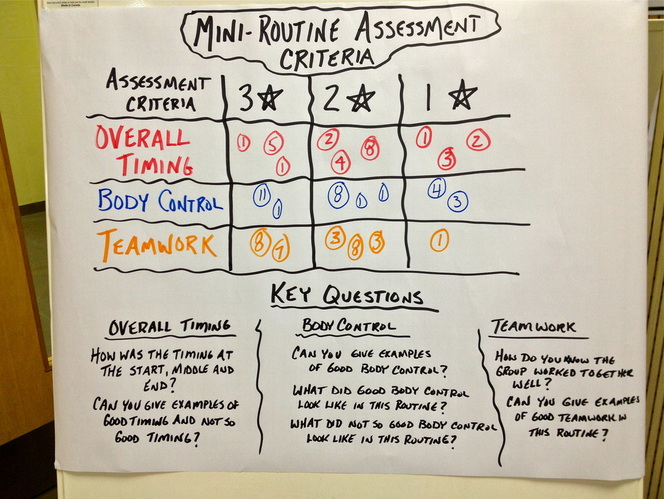 In follow up to last week's pre-assessment task, my students were required to continue to practice the routines that they and their other group members had created last week. I gave them about half the class to practice and refine these routines that were going to be performed to a short piece of music (43 seconds). Before performing the routines, we discussed some of the You Tube movement composition videos seen last week and, as a class, came up with a list of three assessment criteria that we would use when considering how well each group's short performance was. The goal here was to have them know and understand what is required to perform well. The list of assessment criteria that you see in the photo was generated by the students. I gave them some guiding questions afterwards to think about while their were watching each group's routine. At the end of the routines, all the kids peer assessed the other group's performances by using a star rating system (3 stars was excellent, 2 stars was good, and 1 star meant that there needed to be improvement). Along with recording these results, the students who had observed also gave immediate verbal feedback. The students did a great job giving feedback and from what I could see honest peer assessment ratings for each of the performances. 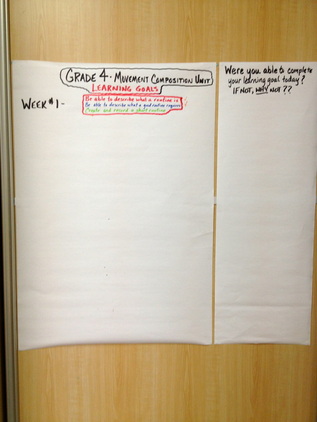 Along my journey of researching ways to better deliver quality PE lessons, I have come across the work of John Hattie and his 'Visible Thinking' approach to education. One of his books, in particular, has been an excellent resource in helping me to push my own thinking to a deeper level about ways to better engage my students in their learning experiences in PE. The book is entitled Visible Thinking for Teachers -- Maximizing Impact on Learning and I highly recommend it for any professionals wanting to push their teaching to a new level. Hattie stresses the importance of learning goals being as transparent as possible to the students at the start of class. The goals should not only be visible but discussed and used later in the lesson to ensure students are on track. This is very possible to do in PE and I have set the goal for myself to make all of my learning goals visible at the start of every class and remain up for the entirety of the unit. In Hattie's book, Schunk (1996) showed that when learning goals are made transparent at the start of the lesson, students have higher confidence that they can attain them. I am going to post these goals at the start of every lesson and discuss them with my students. Although I feel that I have always made my learning goals for the students known past lessons, after reading Hattie's book, I question whether or not this was always the case. Along with posting these learning goals, I also aim to have the students reflect, at the end of each lesson, on whether or not they were able to complete their learning goal. And if they were not, they must answer why not. Answers will be posted on the paper to the right of the poster. This will be a good indicator to me how effective my teaching is. Perhaps, the students will figure out for themselves if their actions and behavior resulted in them not being able to meet the learning goal. Either way reflecting on whether learning goals are met is good practice for both teacher and students, a win-win situation, especially if future teaching is improved as a result of this process. Please see close up pictures below of the goals for grade 4 for week one in the movement composition unit. 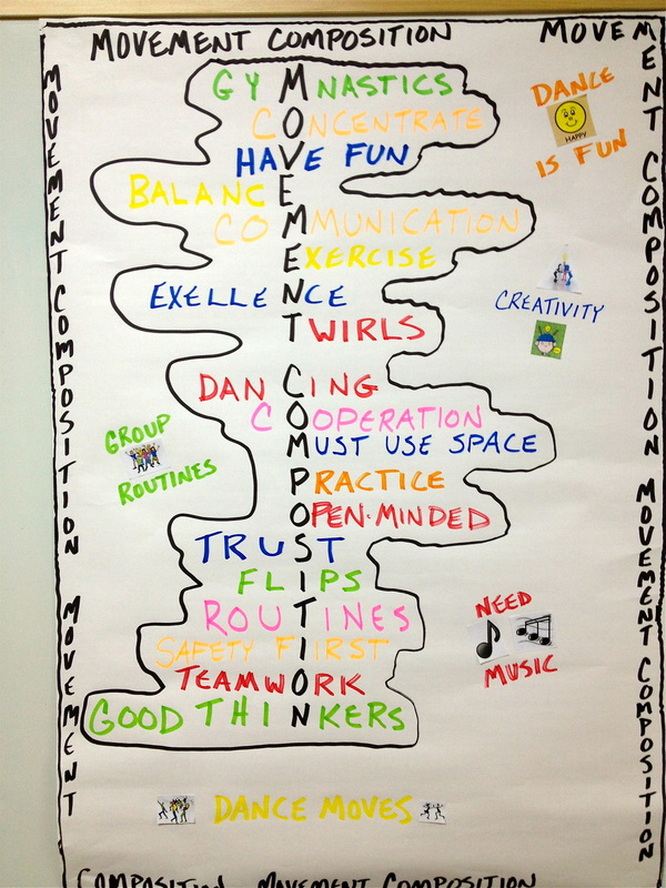 All ideas generated by the students about what movement composition is and key things to consider during the unit. Each of my classes are working on similar, but slightly different pre-assessment tasks in my movement composition unit in PE. In one of my grade 4 classes today, I had the students brainstorm up a list of everything that came to their minds about movement composition. Before brainstorming the students watched a rhythmic gymnastics You Tube video clip and then discussed what they remembered about last year's movement composition unit with their elbow buddies. We then got together as a class and I had the students share their ideas with me which I then recorded on the poster that you see above. I felt that I had given them ample time and opportunity to discuss and share. The discussion was excellent and they came up with a number of different movement composition related thoughts, ideas, and facts. This is a breakdown of the grades I teach, along with the number of classes: Kinder: 2 classes Grade 1: 3 classes Grade 2: 3 classes Grade 3: 3 classes Grade 4: 3 classes. I am completing pre-assessment tasks with all of these different classes this week and aim to make each pre-assessment task slightly different for each of the classes at the same grade level. My goal is to tap into prior knowledge about movement composition and get them to brainstorm all of the different possibilities in the unit. The visuals that are being created are then being posted on the walls of the movement composition room. As each class comes in for their lesson, all of these posters are being used to stimulate further discussion about the unit. For example, the grade 2 poster made a couple of days ago (see below) was used to initiate discussion about how we can create the best routines possible in grade 4. What remains the same is that at each grade level, as a pre-assessment, the students will put together mini-routines in small groups. Grades 2-4 will use the assessment sheet that you see below to draw pictures and name each of the 6 elements that they piece together into a routine. Kindergarten and grade 1 are creating routines as well, but with fewer elements. These routines are meant to be very simple in nature and allow the kids to have some fun and explore different types of movement based on prior knowledge. As I mentioned in a previous blog, they are not being assessed on whether they can execute the move/element properly or not. That is not the purpose of this pre-assessment task.
The students will practice and perform their mini-routines next week to their classmates. Their performances will be used to initiate discussion and what a good routine looks like and we will begin to dig deeper into the unit. The central idea and lines of inquiry will then be introduced to each of the classes. Have a peek at the example student assessment from today's class. 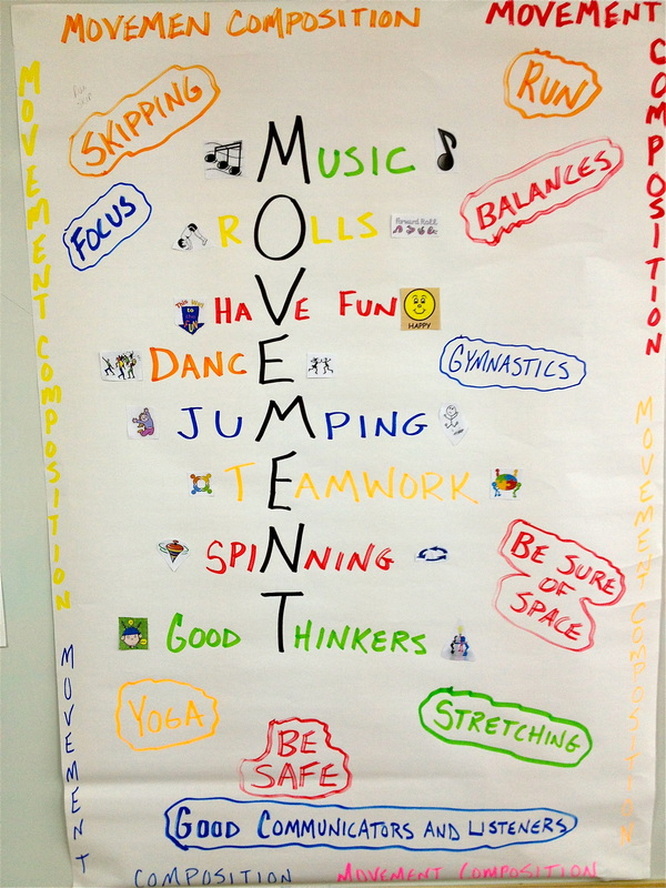 Helping students to connect prior knowledge to the opening of a unit that they have already done in the past in PE assists in getting them in tune and ready to go. For any of you that have been on my blog before, you know that I am a huge fan of including clip art on any visuals that I create with my students in class, especially the younger ones. Doing so reinforces the understanding of new and existing vocabulary related to the PE unit and serves as an excellent visual stimulus for our ESL students. Any posters that we create together remain up for the entire unit and are used to inititiate discussion whenever there is a need to go back and review. As a pre-assessment task for my grade 1 students, we looked at the word 'movement' as it relates to the movement composition unit. Most of the students were in my movement composition unit last year and were able to recall many of the things that we had done which set the stage for a good discussion. I recorded their thoughts about 'movement' and, as you can see by the picture, they came up with some very good ideas that were then recorded on the poster. I would be interested to hear some new ideas about what types of pre-assessment other PE teachers do in their movement composition units. If you would like to share, please let me know and I will post your ideas. Thanks! 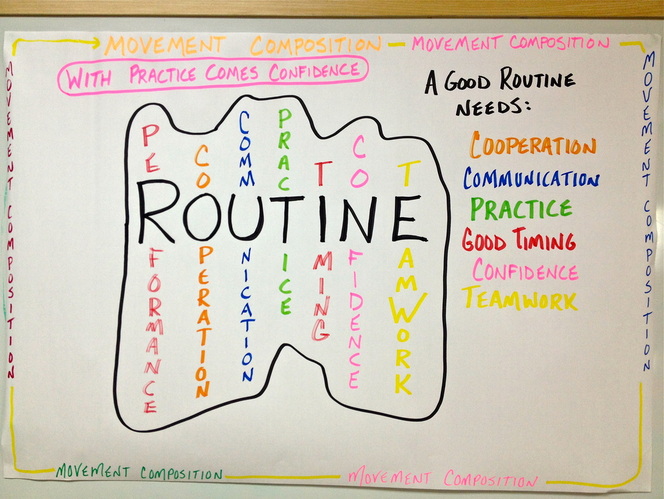 First of all, a very Happy New Year to anyone reading this post. I wish you all the very best of luck and good fortune in your PE programs wherever you may be. I kick-started my movement composition unit today at Nanjing International School in China. To pre-assess I had the students do a number of different activities in order to get them really tuned into movement composition and all that this unit has to offer. I will briefly outline today's lesson plan and describe each step of the lesson. I will include video and example student assessment in the next blog. For today, I thought I would share the excellent thoughts and ideas that my grade 2 students came up with. In this lesson the students:
Next class the students will:
The learning goals that I had for my students today were just to get them tuned in to what a routine is and that movement composition allows for so many opportunities to express themselves. In no way shape or form was I assessing them on their ability to perform a specific movement composition related technique. The simple goals were for them to be able to explore, use their brains, and have fun! |
AuthorKAUST Faculty, Pedagogical Coach. Presenter & Workshop Leader.IB Educator. #RunYourLife podcast host. Archives
September 2022
|
- Welcome
- All Things Teaching and Learning
- The Aligned Leader Blog
- Consulting and Coaching Opportunities
- My TED X Talk
- My Leadership Blog
- Run Your Life Podcast Series
- How PYP PE with Andy Has Helped Others
- Good Teaching is L.I.F.E
- The Sportfolio
- Example Assessment Tasks
- PYP Attitude Posters (printable)
- Publications
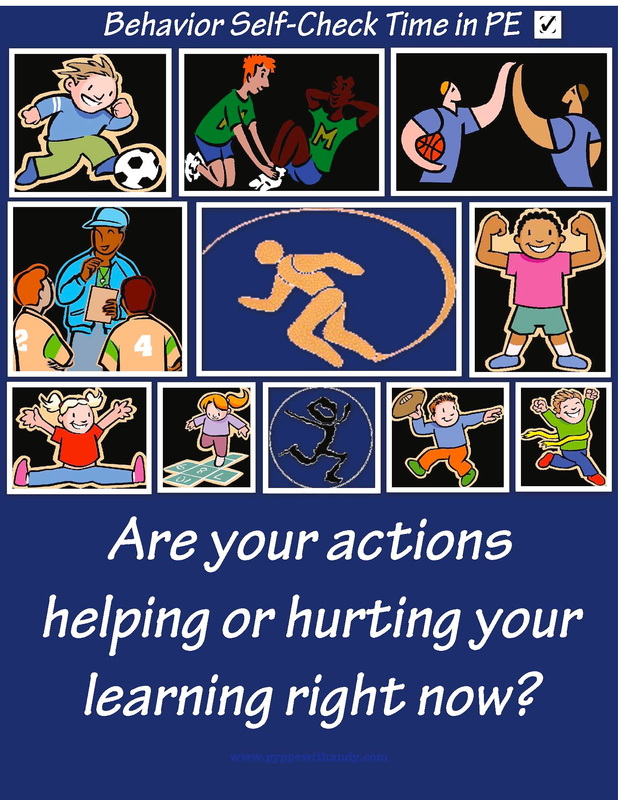
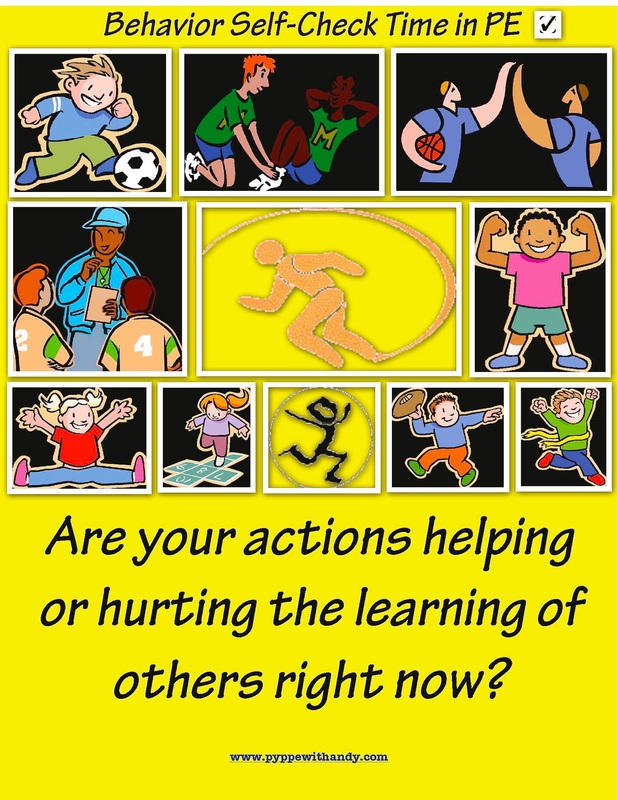
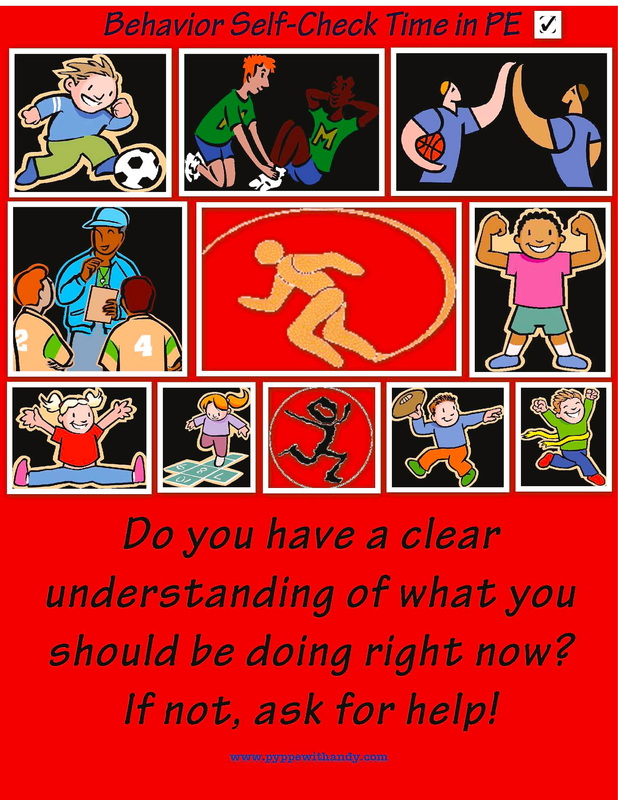
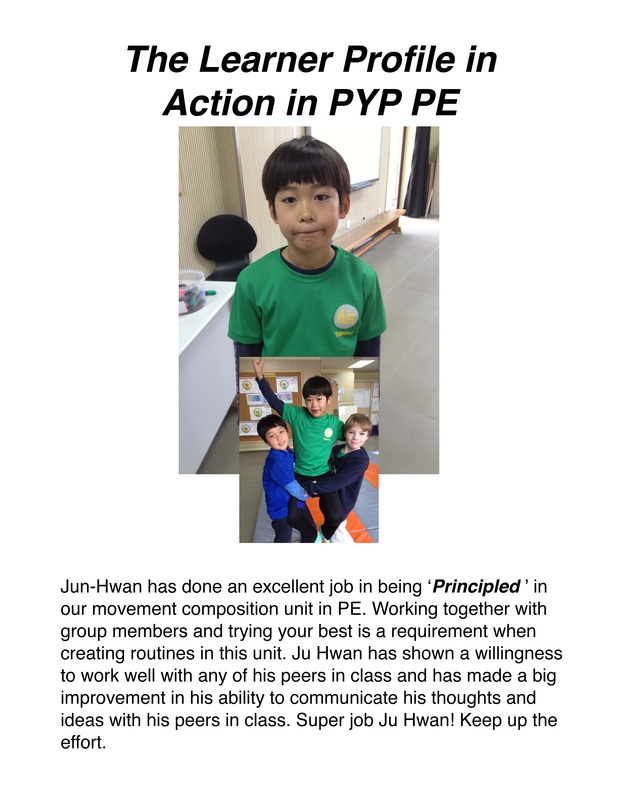
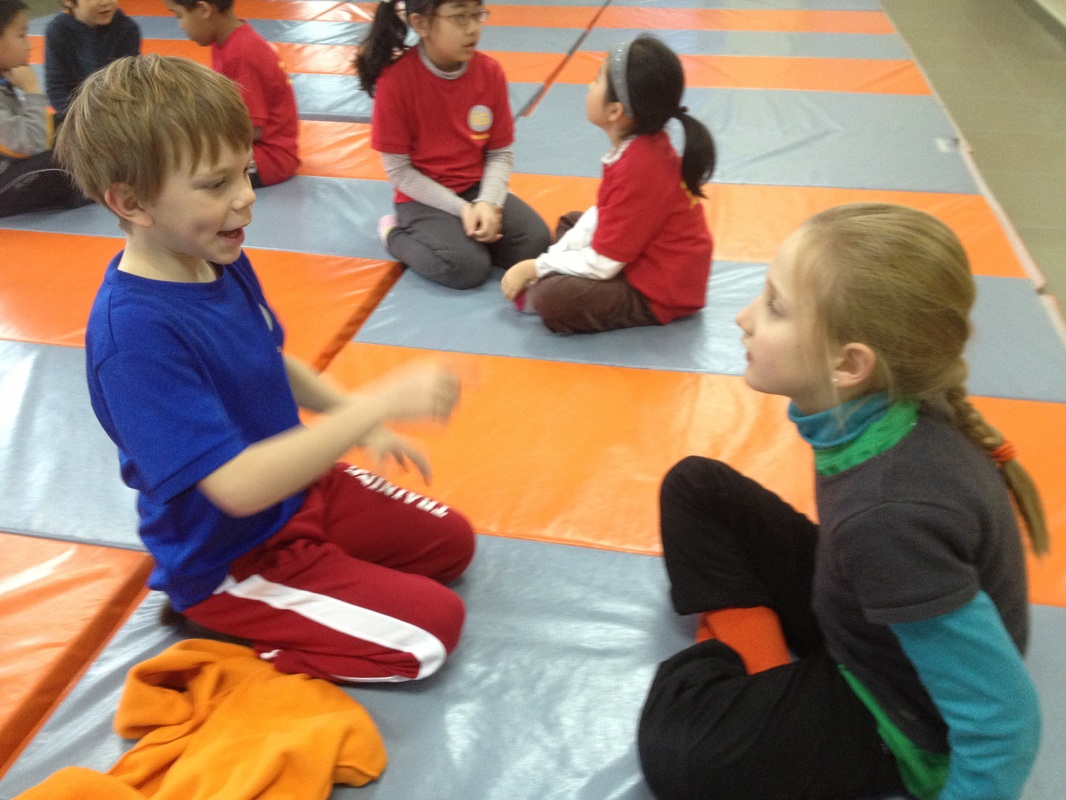
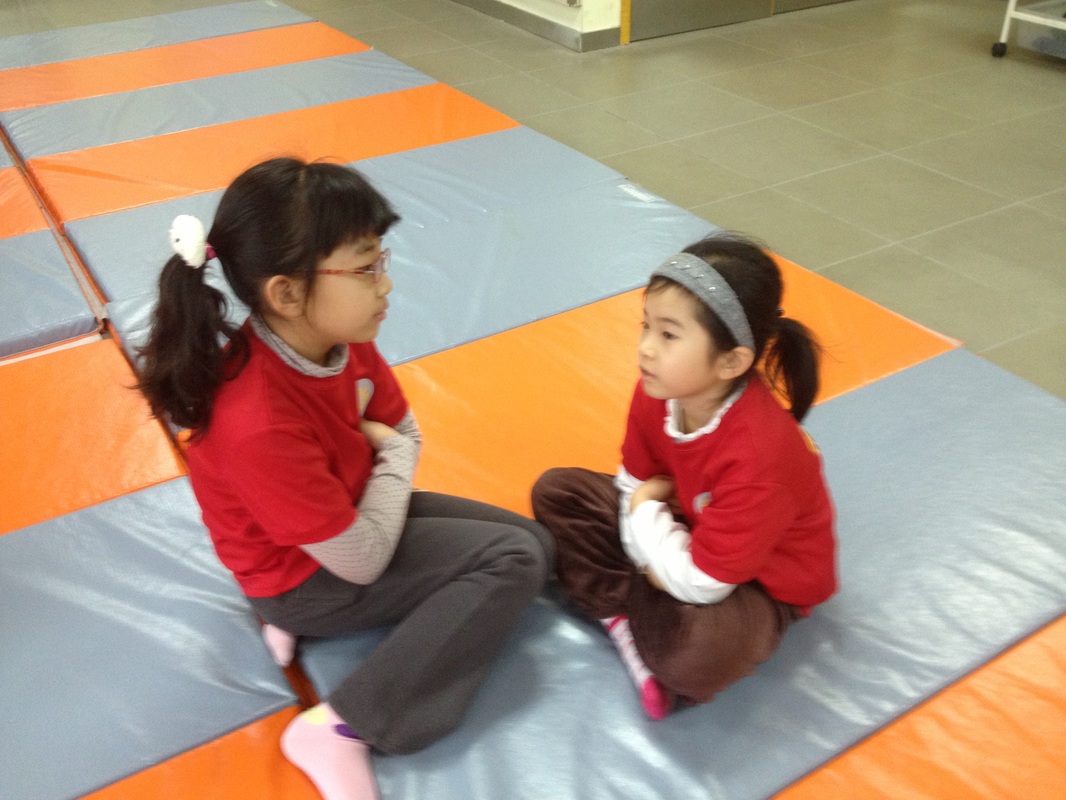
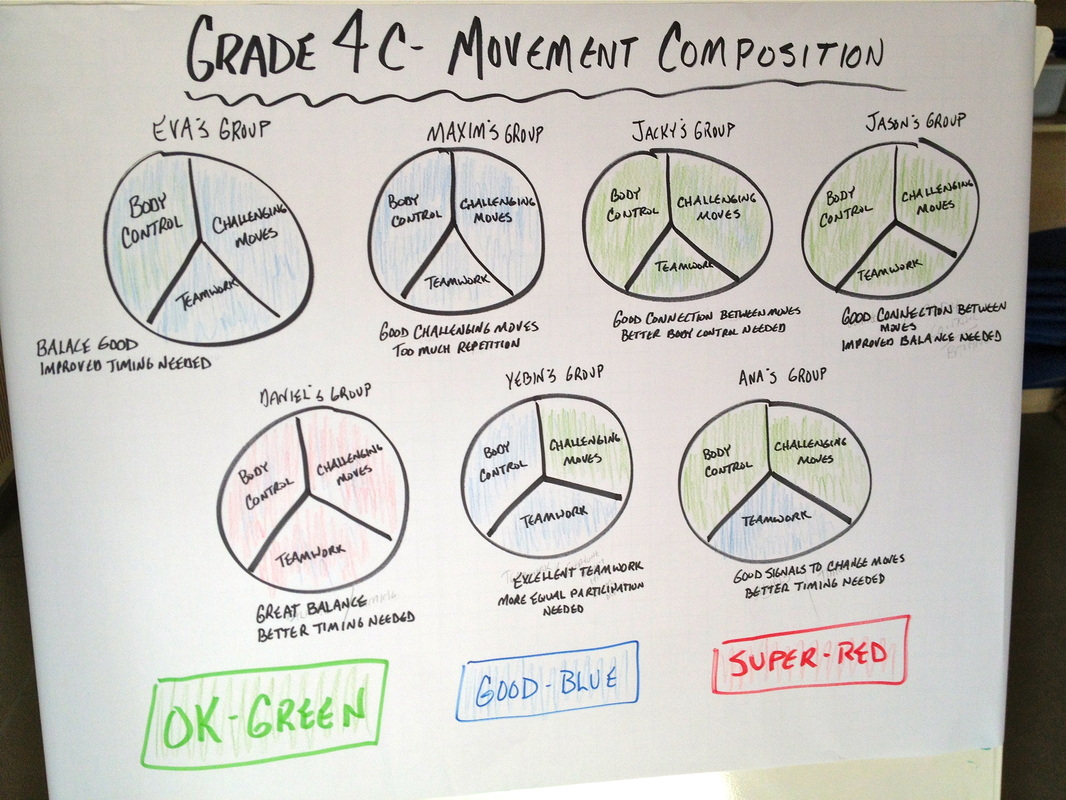
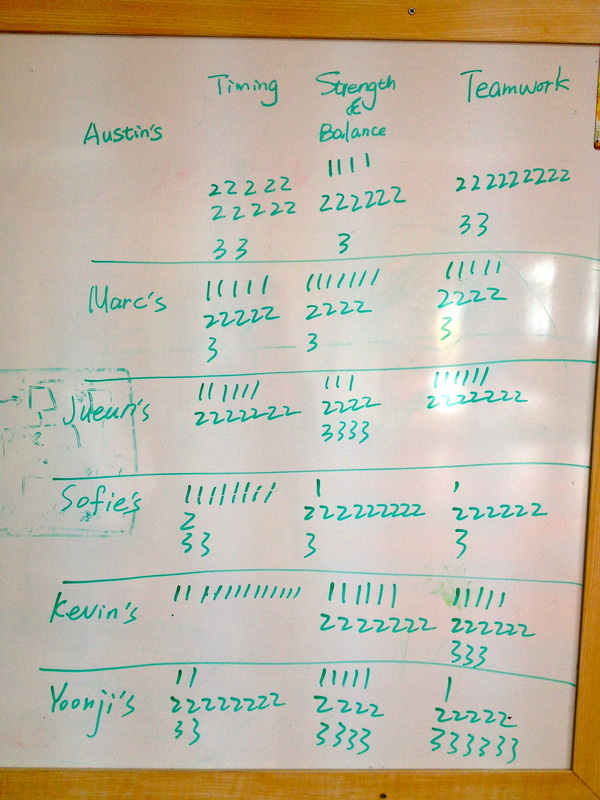
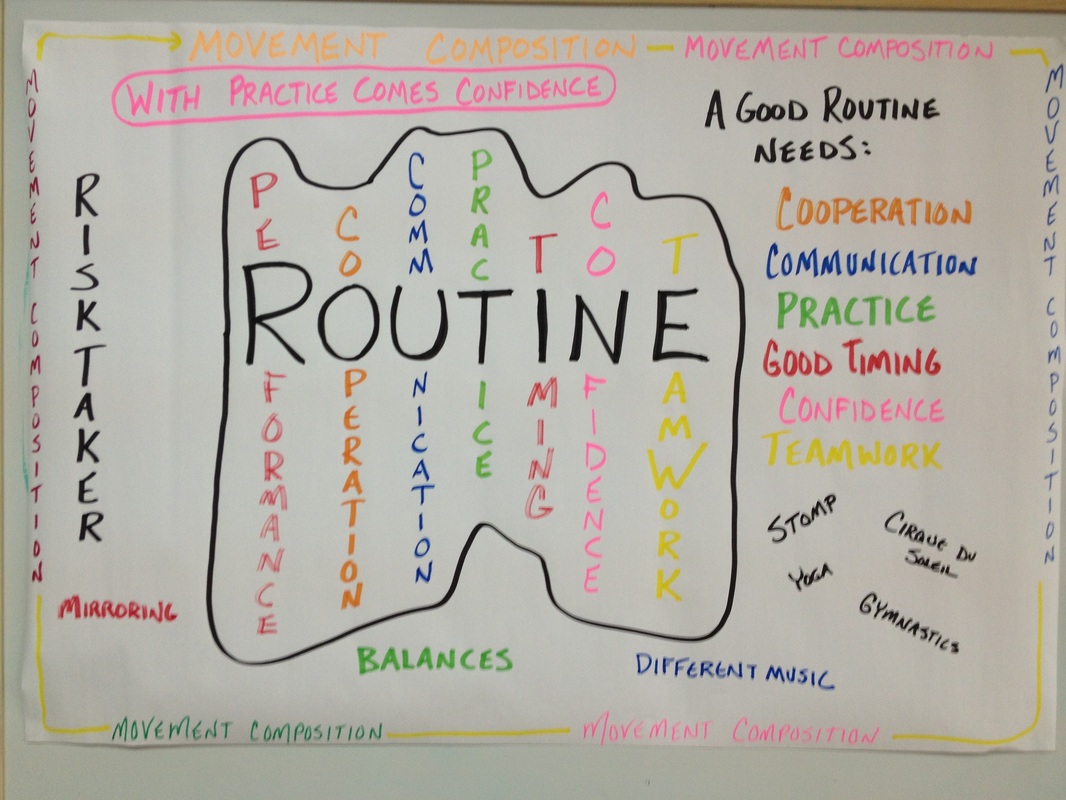
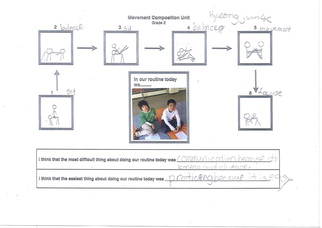
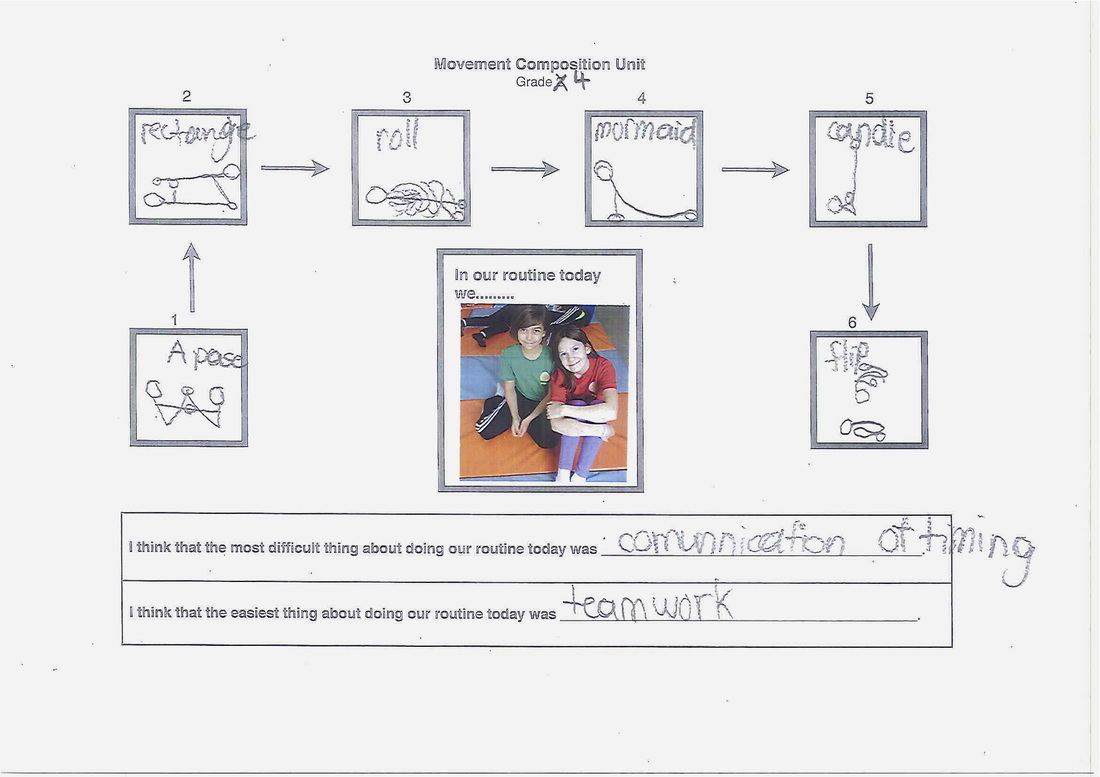
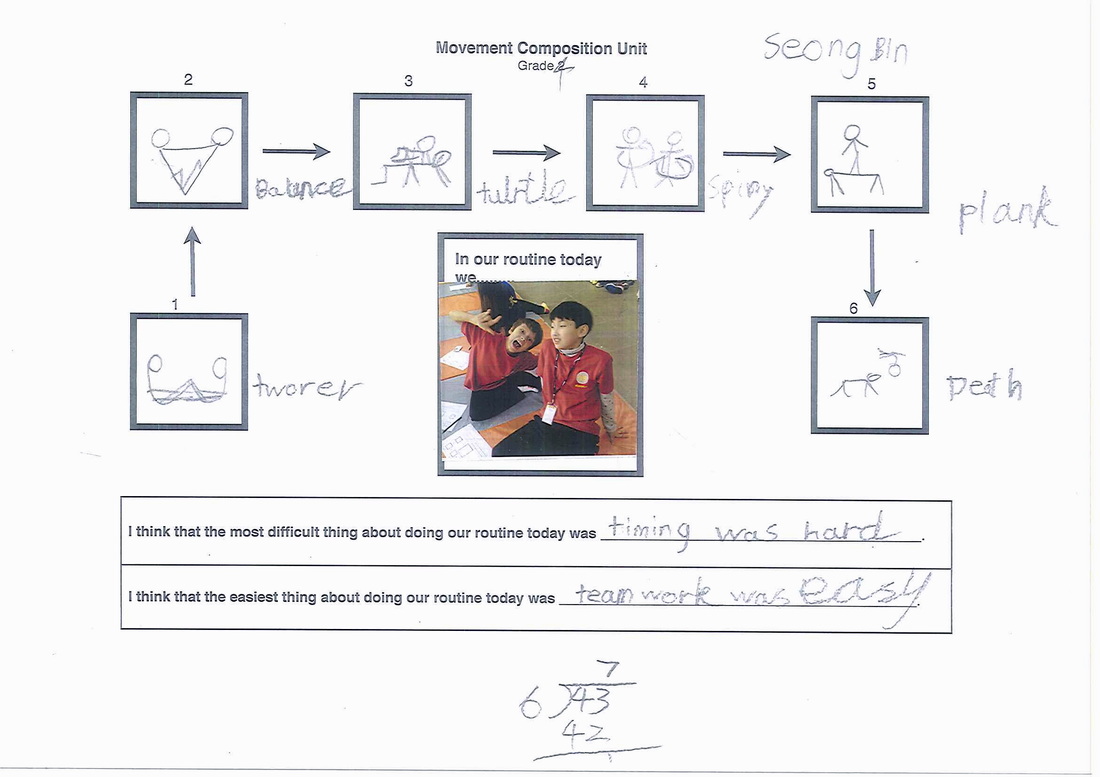
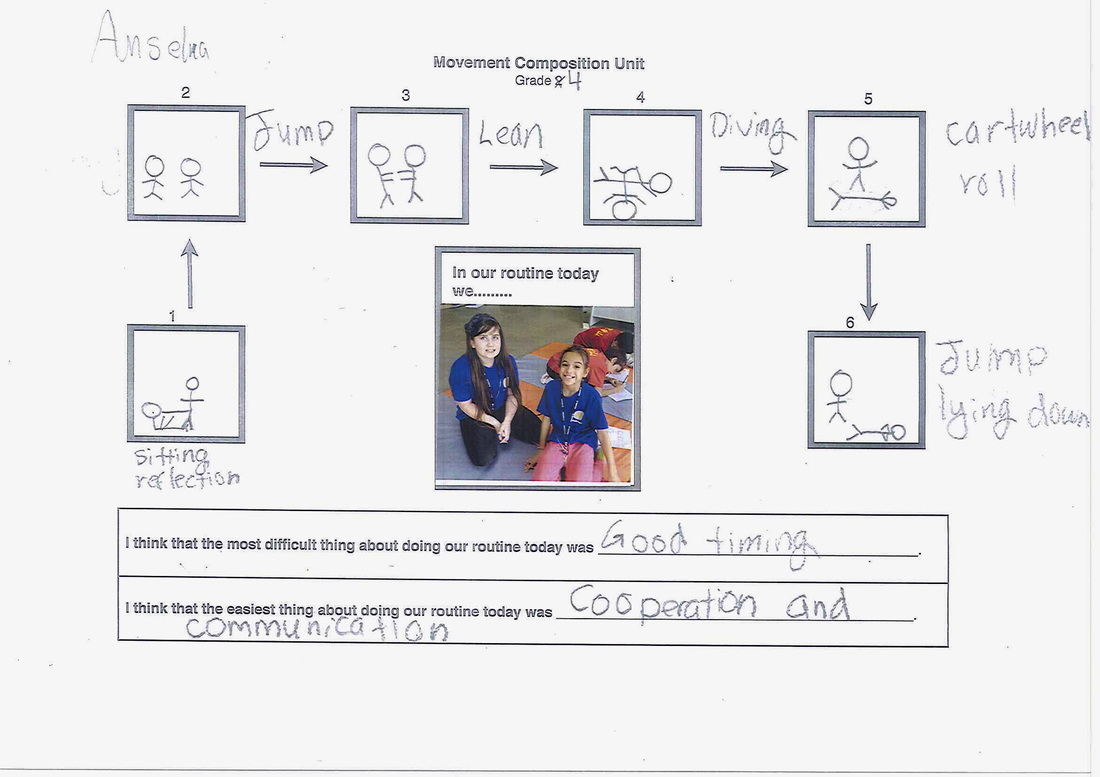
 RSS Feed
RSS Feed
